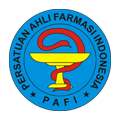Pengaruh Konsumsi Madu terhadap Lama Persalinan Kala I dan Kala II
DOI:
https://doi.org/10.26630/jk.v12i1.2547Keywords:
Honey, Labor progress, Pregnant women.Abstract
The proportion of incidence of prolonged labor is 4,3 and is the second order of birth disorders or complications after premature rupture of membranes. The problem in this study was that 9% of women who gave birth were referred to the hospital because they experienced prolonged labor/labor was not advanced. This study aims to determine the effect of honey consumption on stage I and stage II labor duration in third-trimester multigravida pregnant women at PMB Karang Anyar Community Health Center, South Lampung Regency in 2019. This type of research is a quantitative (analytical) research method using a true experimental design with a post-test design only control group design. The subjects of the study were 90 third trimester multigravida, pregnant women. Data collection uses primary data. Univariate data analysis using percentages and bivariate analysis using chi-square. The results showed that there was an effect of giving honey consumption to third-trimester multigravida pregnant women on the first stage of labor with a p-value of 0,05 and there was an effect on the duration of labor in the second stage with a p-value of 0,02. Midwives as service providers to pregnant women and women who give birth advise mothers to consume honey 2-3 tablespoons 2 times a day from 34 weeks of gestation for good uterine contractions and increase the strength of the mother to push during the labor process.
References
Bachtiar, A. H., Bukhari, A., & Hadju, V. (2020). Efek Pemberian Madu Pada Ibu Hamil Anemia Terhadap Kadar MDA, 8ohdg dan Hemoglobin. Quality: Jurnal Kesehatan, 14(1), 53-59.
Badan Pusat Statistik. (2017). Survey Demografi Kesehatan Indonesia (SDKI) 2017. Jakarta: Badan Pusat Statistik.
Baskhara, A. L., (2008). Khasiat Keajaiban Madu untuk Kesehatan & Kecantikan, Yogyakarta: Smile-Book.
Dinas Kesehatan Kabupaten Lampung Selatan. (2017). Profil Dinkes Kabupaten Lampung Selatan. Lampung Selatan.
Dinas Kesehatan Provinsi Lampung. (2016). Profil Dinkes Provinsi Lampung 2016. Bandar Lampung.
Hidayat, A. A. (2007). Metode Penelitian Kebidanan Dan Analisa Data. Jakarta: Salemba Medika.
Ihsan, A. A. (2011). Terapi Madu Hidup Sehat Ala Rasulullah. Jogyakarta: Javalitera.
Kusumahati, (2010). Asuhan Kebidanan Nifas. Yogyakarta: Andi.
Manuaba, I. B. G. (2010). Ilmu Kebidanan, Penyakit Kandungan Dan Keluarga Berencana. Jakarta: EGC.
Isriyani, Popy. (2017). Pengaruh Pemberian Kacang Hijau Dan Madu Pada Ibu Bersalin Terhadap Lamanya Kala II Di Wilayah Kerja Puskesmas Situjuh Kecamatan Situjuah Limo Nagari Kabupaten Lima Puluah Kota. Laporan Tugas Akhir. Bukit Tinggi: Universitas Fort de Kock.
Praditama, A. D. (2014). Pola Makan pada Ibu Hamil dan Pasca Melahirkan di Desa Tiripan Kecamatan Berbek Kabupaten Nganjuk. [Skripsi]. Surabaya: Fakultas Ilmu Sosial dan Ilmu Politik, Universitas Airlangga.
Purbaya, J. R. (2007). Mengenal dan memanfaatkan khasiat madu alami. Bandung: Pinonir Jaya.
Sambodo, N.W., (2009). Uji Efek Tonik Madu Rambutan Pada Mencit Putih Jantan Dengan Metode Natatory Exhaustion. [Skripsi]. Surakarta: Fakultas Farmasi, Universitas Muhammadiyah Surakarta.
Suroso, S., & Paryono, P. (2016). Pengaruh konsumsi sari kurma pada akhir kehamilan terhadap kemajuan persalinan Kala I dan jumlah perdarahan saat persalinan pada primipara di wilayah kerja Puskesmas Klaten Selatan. Interest: Jurnal Ilmu Kesehatan, 5(1), 41-45.
Suranto, Adji S. (2004). Khasiat & Manfaat Madu Herbal. AgroMedia.
World Health Organization. (2019). Trends In Maternal Mortality 2000 to 2017: estimates by WHO, UNICEF, UNFPA, World Bank Group and the United Nations Population Division.
Zuliyanti, N. I. (2012). Pengaruh pemberian susu dan madu pada ibu intranatal terhadap Lamanya kala II di rumah bersalin kharisma husada kartasura Sukoharjo. Jurnal Komunikasi Kesehatan, 1(01).
Downloads
Additional Files
Published
Issue
Section
License
Authors who publish in this journal agree to the following terms:
- Authors retain copyright and grant the journal right of first publication with the work simultaneously licensed under a Creative Commons Attribution License (CC BY-SA 4.0) that allows others to share the work with an acknowledgment of the work's authorship and initial publication in this journal.
- Authors can enter into separate, additional contractual arrangements for the non-exclusive distribution of the journal's published version of the work (e.g., post it to an institutional repository or publish it in a book), with an acknowledgment of its initial publication in this journal.
- Authors are permitted and encouraged to post their work online (e.g., in institutional repositories or on their website) prior to and during the submission process, as it can lead to productive exchanges, as well as earlier and greater citation of published work.















